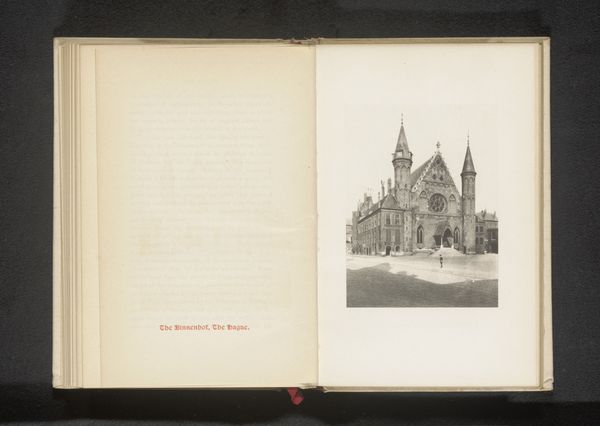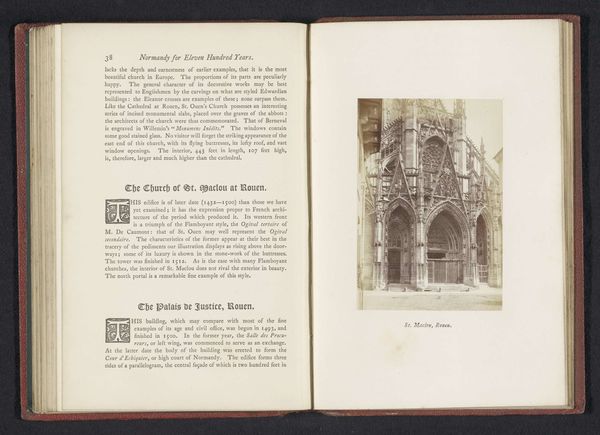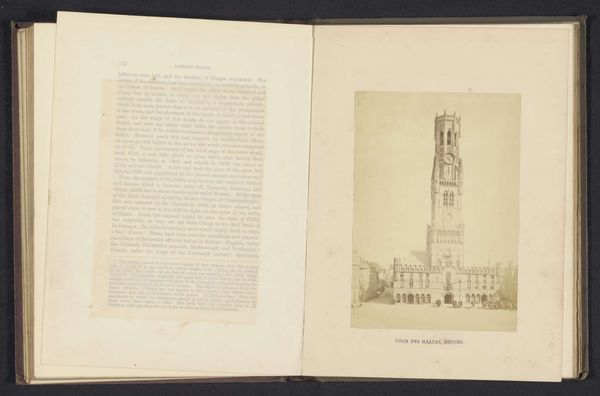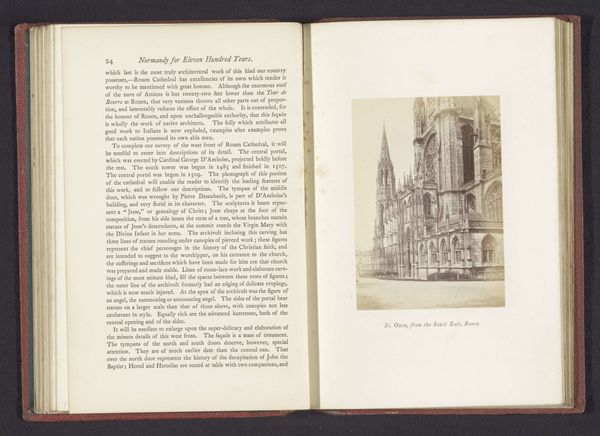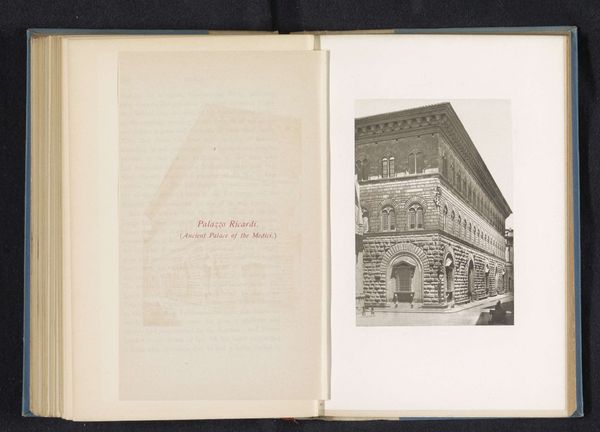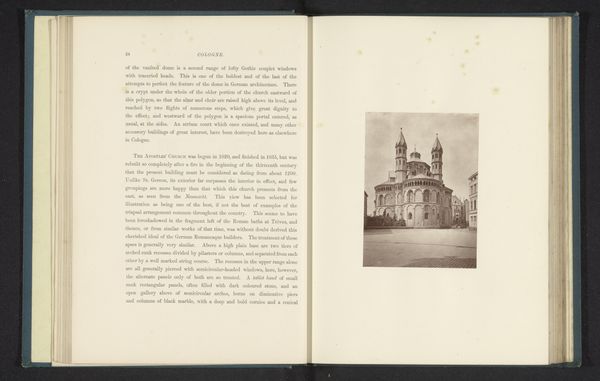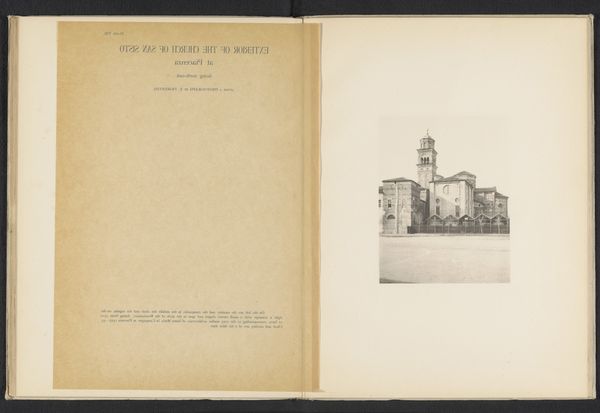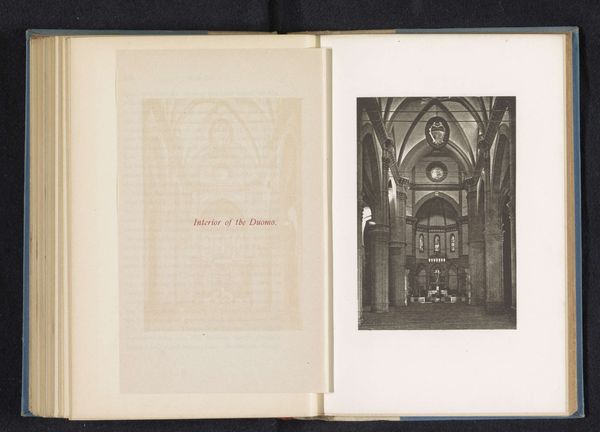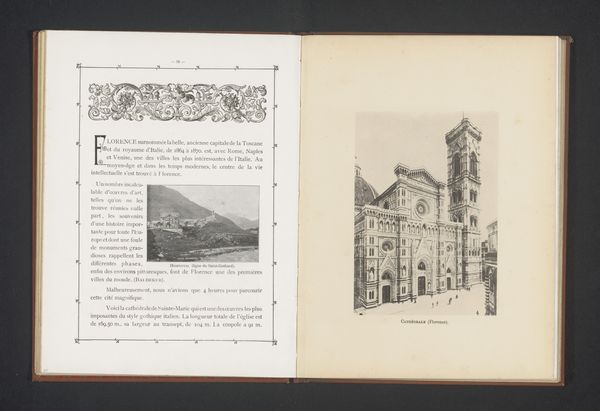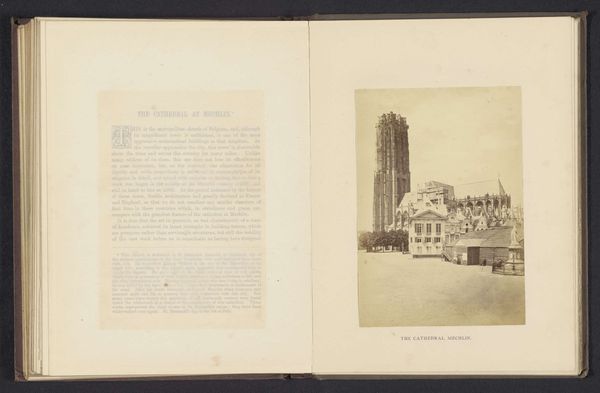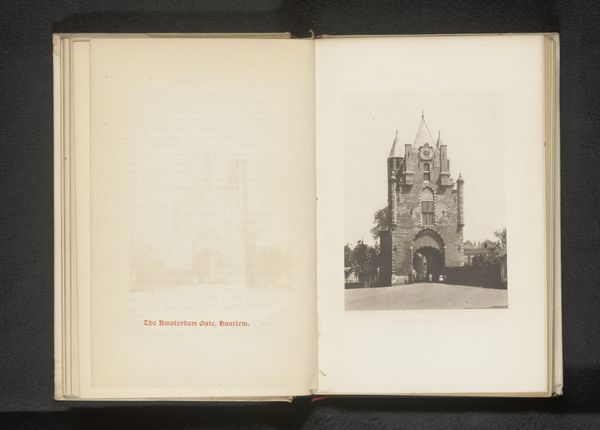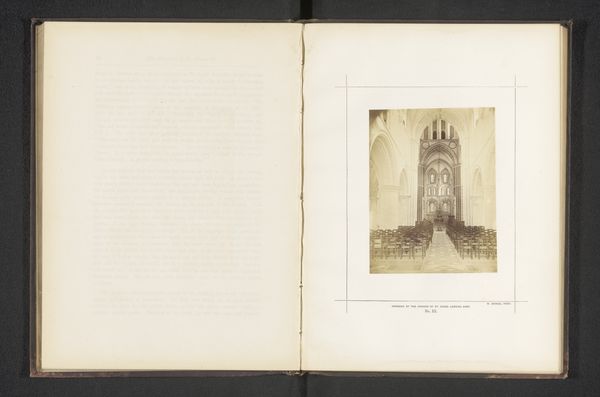
print, paper, photography, architecture
# print
#
paper
#
photography
#
cityscape
#
italian-renaissance
#
architecture
Dimensions: height 105 mm, width 86 mm
Copyright: Rijks Museum: Open Domain
Editor: Here we have an image titled "Exterieur van de Dom van Florence," which translates to "Exterior of the Florence Cathedral," printed before 1890. The photographic print, pasted into a book, showcases a clear view of the Duomo and Giotto’s Campanile. I’m struck by the geometric patterns created by the facade and how the light renders the depth and texture of the building materials. What's most interesting to you about this particular rendering? Curator: Indeed, the power of this work resides in the meticulous recording of detail and form, enabled by photography. Observe how the structural clarity afforded by the photographic process allows the architectonic elements—the dome, the facade, the campanile—to present as distinct, yet interconnected geometric entities. How does the tonal range inform your perception of depth and space within the image? Editor: I notice a clear distinction between the darker areas emphasizing recessed portions of the facade and the lighter areas highlighting projections and the curved surface of the dome. That sharp contrast gives depth. Is this contrast intentional, perhaps influencing how the Cathedral is perceived? Curator: Undeniably. The contrast enhances our appreciation of the compositional structure and highlights key geometric relationships. The dark tonality around the sculptures amplifies their presence and draws attention to the ornate window tracery. The photographic medium offers an unbiased capture, allowing the intrinsic architectural forms to become the primary subject of interpretation. What does this objectivity signify for you in the context of late 19th-century artistic representation? Editor: The removal of subjectivity allows for a purely visual experience. The building's architectural forms become more dominant than the historical context surrounding them. This emphasis really allows for an appreciation of the Duomo on a more structural, formal level. Curator: Precisely! The strength of the piece, from this perspective, lies within its self-referential visual language rather than narrative or historical anecdote. It underscores the intrinsic beauty of constructed form through careful, considered photographic means.
Comments
No comments
Be the first to comment and join the conversation on the ultimate creative platform.
